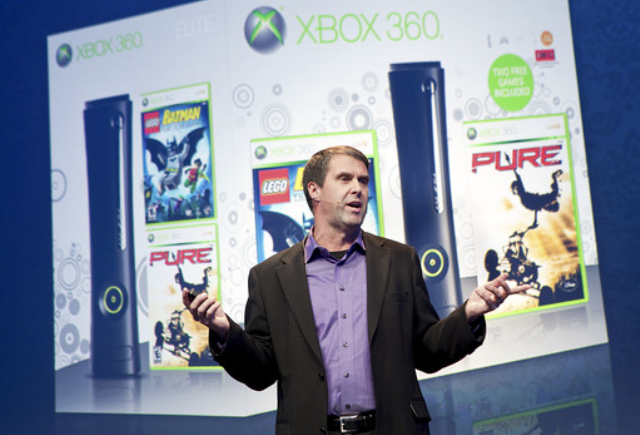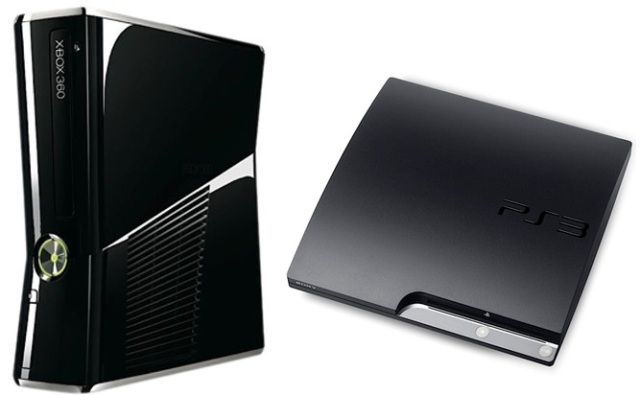Robbie Bach partially credits Sony mistakes for Xbox’s success
When the Xbox 360 launched in November of 2005, the console wars were largely viewed as a two-horse race. Nintendo’s Wii was an afterthought in the minds of most industry analysts and executives — a belief that would be proven correct in terms of relevance among the traditional gamer audience, but so very wrong on the sales front, as it marched on to over 95 million units sold worldwide as of March. Rather, both popular and informed opinion said the battle would be fought between Sony and Microsoft.
Sony had spent the past 10 years decimating Nintendo and Sega’s positions as dominant forces in the industry by appealing to an older consumer and making the PlayStation 2 the best-selling home console of all time with more than 150 million consoles sold as of the end of last year. After having replaced the name “Nintendo” with “PlayStation” as a synonym for video games, the Tokyo, Japan-based electronics empire was feeling as invincible as Superman. With Nintendo having done its damnedest to torpedo its relationships with third-party developers and the software behemoth in Washington looking like the proverbial babe in the woods when it came the console biz, Sony could see no kryptonite in sight. Of course, few outsiders did either at the time.
Had it not allowed the pride that success brought to convince it that sinking so much of its PS and PS2 profits into the foolhardy enterprise of out-muscling the Xbox 360 with the PlayStation 3, however, it might have foreseen that it was on a path to learn the same hard and humbling lesson it had itself taught Nintendo. Instead, it produced an expensively priced machine that arrived a year late to the party and quickly built a reputation, fair or not, of being notoriously difficult to develop for. Geekwire reports that when he spoke to the Northwest Entrepreneur Network last week, Robbie Bach, former president of Microsoft’s Entertainment & Devices Division, highlighted how Sony’s miscalculations and mismanaged generational shift opened the door for the 360 to become the hugely profitable success that it is today.
“When you’re doing a startup, you need friends. It’s just the way life works,” Bach said. “It turned out we were able to convince retailers and publishers like Activision, Electronic Arts and others, that it was a good thing for Microsoft to be successful, because if we were not successful, the only game in town was Sony. Being dependent on somebody else was bad for them, and so they supported us disproportionately to what they should have, mathematically.”
When Microsoft first threw its hat into the video game hardware ring with the original Xbox in 2000 — a device that was outrageously successful at losing the software giant money — the longtime software company had to start from nothing on the gaming hardware front. It was determined to establish a foothold in the industry, no matter how great the cost. And it would prove great indeed. Between 2001 and 2005, Microsoft’s Home and Entertainment Group, the internal division responsible for the Xbox, among other things, parted ways with $4 billion.
Microsoft’s estimated loss of $168 per original Xbox console sold became the butt of countless fanboy jokes. The console’s expensive components blocked its maker from making money late in the console generation when it typically becomes far cheaper for aging hardware to be produced, and plenty of investors were displeased when it appeared there was no stopping the bleeding. The firm stayed the course, insisting it was establishing credibility for the Xbox brand, credibility that it would one day leverage into profitability and living room domination.
When Sony misplayed its hand with the leap to the PS3, Microsoft pounced. “Some of the success of Xbox was due to the fact that Sony did some really not so smart things,” explained Bach. “They mismanaged their 70 percent market share. It’s a long conversation. The transition to PlayStation 3 was really, really bad. And really hard. They mismanaged their partners, they mismanaged their cost structure. They made their next platform so complicated that developers couldn’t develop for it.”
It wasn’t all smooth sailing for Microsoft from there, though. Readers might remember the humongous number of hardware failure troubles 360 owners have had to deal with. Bach said it was “the most painful thing in [his] life, but the company persevered through [it].” Another billion had to be plunked down over the past six-and-a-half years to address the obscene number of “red ring of death” failures.
Sony would eventually make a recovery and a successful charge up the home console sales charts as the older Xbox 360 and under-powered Wii seemed to fade. Microsoft, not willing to watch the advantage it had worked so hard to establish slip away without a fight, countered with motion-sensing Kinect “controller” and an even more aggressive push to bring multimedia features to its console than before. It worked. Although the gap between 360 and PS3 sales is but a few million wide, Microsoft sits happily on the far side of that gap and has now spent more than a year on top of the monthly NPD hardware charts.
Bach left Microsoft in 2010 after 22 years there. Today he is involved in a number of nonprofit enterprises. His vacated position at the Entertainment and Devices division has since been occupied by Don Mattrick. He and the rest of the team are now working behind the scenes on the 360’s successor, supposedly codenamed Durango, while their competitors over at Sony endeavor to create what is rumored to be named the PlayStation Orbis. Details are light on both fronts, but both products should follow up on a home console cycle that has been unlike any before it with one that equally differentiates itself from its predecessors.
Source: Geekwire via GamesIndustry International



